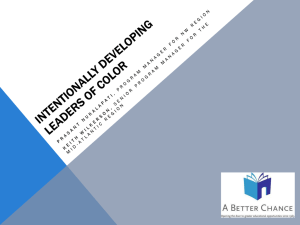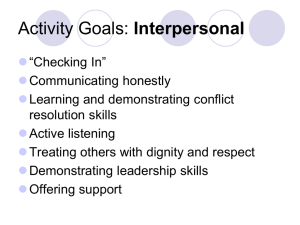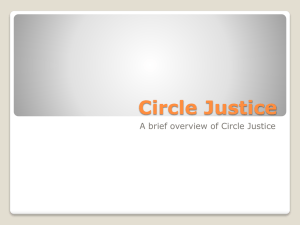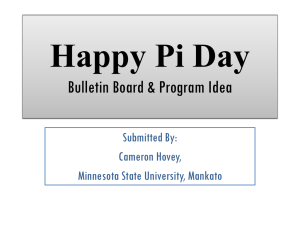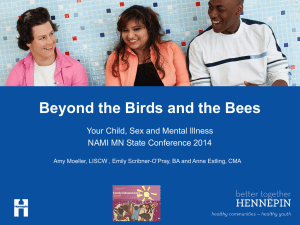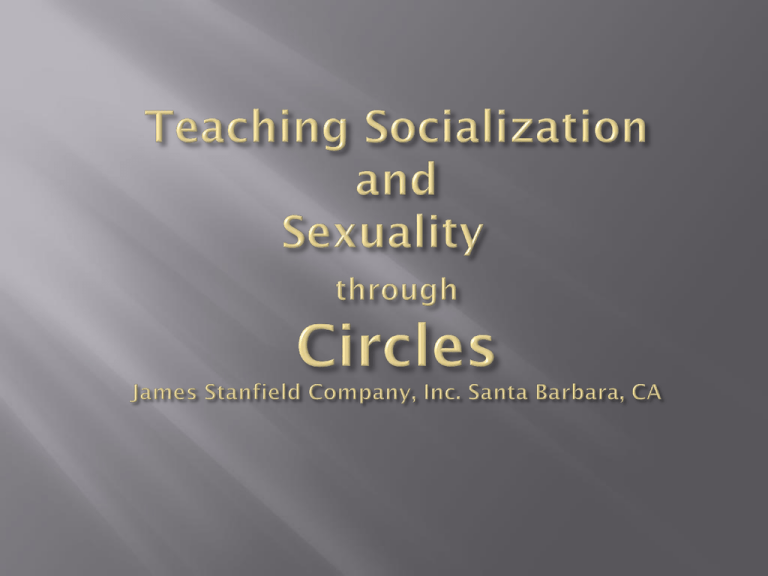
All people including those with disabilities
are sexual beings. Historically, society has
not viewed these people as being sexual and
today’s society treats them differently. They
are often denied sexual health information
education about how to function in society
and how to be valued as a sexual being
(Shade Consulting 2008)
One of the primary misconceptions that society
holds about human sexuality is that it means
the drive to have sexual intercourse…Having a
physical sexual relationship may be one facet
of our sexuality, but it is not the only one or
even the most compelling or important.
Sexuality is, in fact, very much a social
phenomenon…
Thus our sexuality extends far beyond the
physical sensations…it is also what we feel about
ourselves, whether we like ourselves, our
understanding of ourselves as men and women,
and what we feel we have to share with others.
Our sexuality does not develop in isolation
from other aspects of our identity
What is appropriate sexual behaviour is
appropriate social behaviour
Although parents are for the
most part the primary
sexuality educators of their
children, the school setting
plays a major role in the
socialization and sexuality
education of children and
youth. Here is where the
most extensive
opportunities to socialize
and mix with their peers
occurs
Copyright 1983, 1993 James Stanfield
Publishing Company
Santa Barbara, California
Fundamental goal is to create healthy,
independent people who have a positive
view of sexuality and have respect for
themselves and others
Not just about basic facts of life,
reproduction, and sexual Intercourse
Protects their safety
Teaches societal expectations and legal rules
Life-long process
Humour
Praise successes
Repetition, Repetition, Repetition
Black & White no grey areas
Learning a new skill – 6 weeks
Replacing one behaviour with another - >6
weeks
Group work (if possible)
Teach a more conservative model
Role play situations
Be a role model
Peers have role to play in accepting or not
accepting inappropriate behaviour
Facial expression/body language
Consistency – very important
The CIRCLE Concept is a concrete
organizational paradigm that helps students
generalize their social learning and
awareness across many settings.
CIRCLES defines and clarifies appropriate
social boundaries and helps students
recognize and practice them.
The CIRCLES program focuses on quality of
life and personal safety.
The CIRCLES program addresses the social
boundaries of:
Touch
Talk
Trust
Purple Private Circle
Blue Hug Circle
Green Far Away Hug Circle
Yellow Handshake Circle
Orange Wave Circle
Red Stranger Circle
Level 1(part 1 & part 2) – depicts who belongs
in each circle
Level 2 (part 1 & part 2) – applies it to real life
situations
This circle contains only the self and is the circle
on which all other relationships are based
(position of power)
This circle is reserved for family, boyfriends,
and girlfriends. This is the only group where a
special type of hugging and kissing is allowed
This circle is limited to best friends. It’s
appropriate to give people in this circle a hug,
but it’s not appropriate to become excessive
when showing affection
This circle permits touching but limits it to
shaking hands with acquaintances upon
meeting them
This circle includes children and friends. The
proper greeting for this group is a friendly
wave.
This circle includes people who are unfamiliar.
Strangers are not to be touched and they should
not touch you.
Whole group or individual
Start at the level appropriate for your
student/group
Tailor program to meet the student
need/boundary issue ( i. e. teach level 1 only or
move on to level 2)
Learning new routines
Provide missing information
Coping & adjusting to change
Advancing interpersonal understanding
Aiding the development of appropriate
behavious
Providing insight into what other people are
thinking & feeling
Short, straightforward descriptions – can add
pictures or symbols
Provide details of what a person might expect
from a situation
Gives the perspective of others
Describes what may be expected by the person
Written from the individual’s perspective
Written in first person & present tense
Avoid absolute, inflexible phrases –Replace I
will/I can with I will try/I will work on
Show video DVD
Discussion
Role Play
Application in real world situations
Situations where boundaries are
appropriately crossed (in a cramped
hallway, teacher entering space to help
student)
Some students may come from different family
units (i.e. Students’ blue circle may consist of
group home worker rather than parent)
Disclosure issues may arise, be ready to
address them appropriately
Parents need to be informed if you are using
the Circles program in your classroom
Provide discussion points for parents to
have with their child (agendas, letters, emails, etc)
Watch The DVD Overview
Questions

